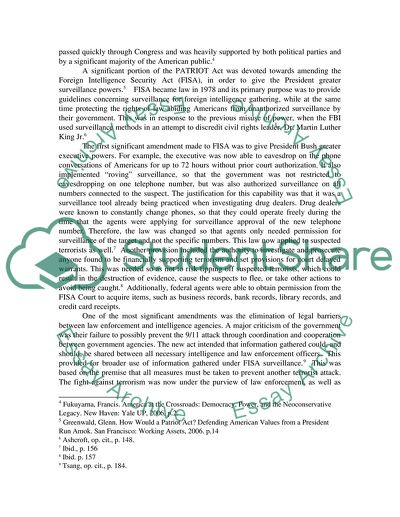Cite this document
(The War on Terror Case Study Example | Topics and Well Written Essays - 2000 words, n.d.)
The War on Terror Case Study Example | Topics and Well Written Essays - 2000 words. Retrieved from https://studentshare.org/law/1542543-subject-global-politics-key-questions-topic-do-attempts-to-counter-terrorism-undermine-human-rights-and-should-we-be-concerned
The War on Terror Case Study Example | Topics and Well Written Essays - 2000 words. Retrieved from https://studentshare.org/law/1542543-subject-global-politics-key-questions-topic-do-attempts-to-counter-terrorism-undermine-human-rights-and-should-we-be-concerned
(The War on Terror Case Study Example | Topics and Well Written Essays - 2000 Words)
The War on Terror Case Study Example | Topics and Well Written Essays - 2000 Words. https://studentshare.org/law/1542543-subject-global-politics-key-questions-topic-do-attempts-to-counter-terrorism-undermine-human-rights-and-should-we-be-concerned.
The War on Terror Case Study Example | Topics and Well Written Essays - 2000 Words. https://studentshare.org/law/1542543-subject-global-politics-key-questions-topic-do-attempts-to-counter-terrorism-undermine-human-rights-and-should-we-be-concerned.
“The War on Terror Case Study Example | Topics and Well Written Essays - 2000 Words”. https://studentshare.org/law/1542543-subject-global-politics-key-questions-topic-do-attempts-to-counter-terrorism-undermine-human-rights-and-should-we-be-concerned.


